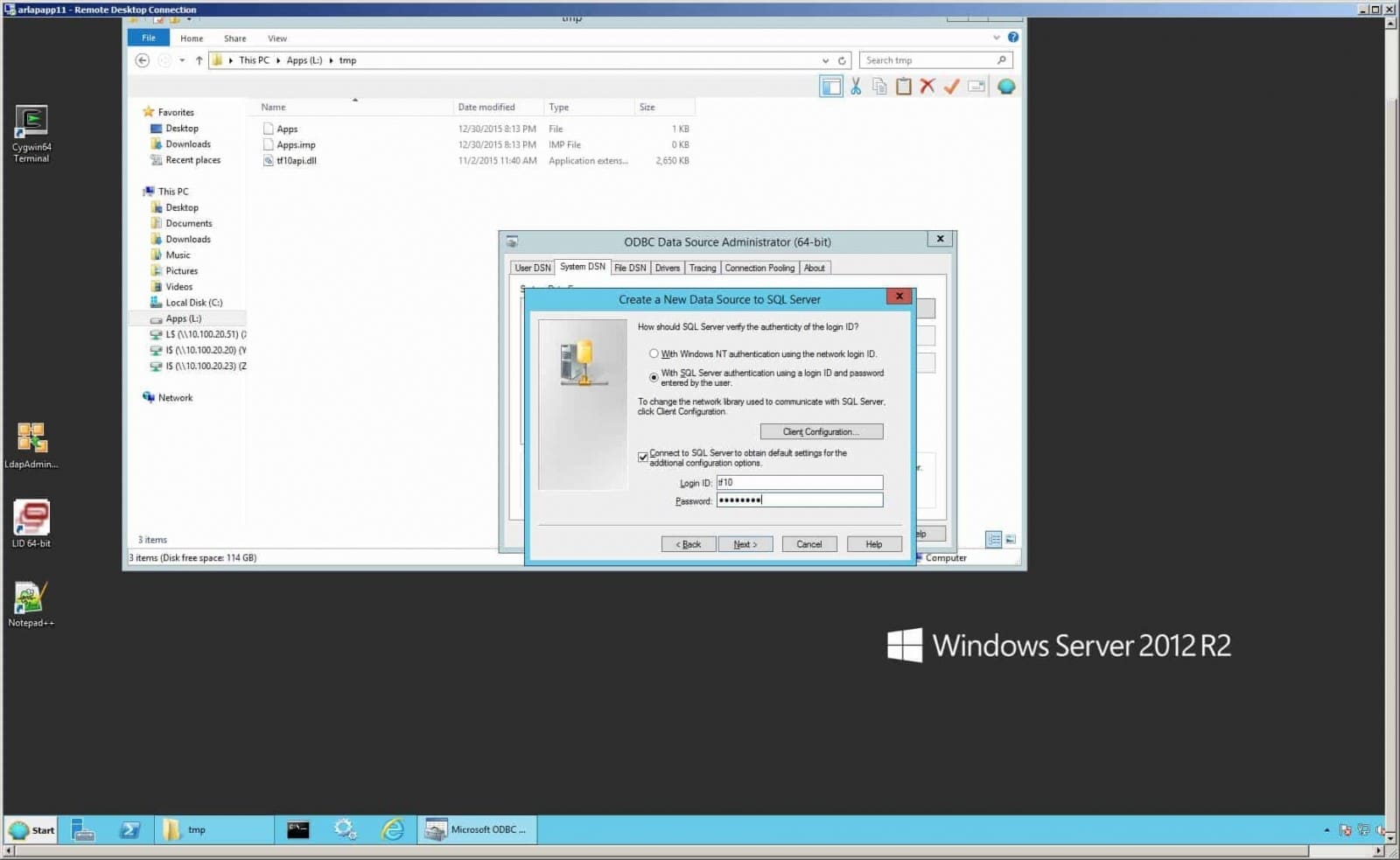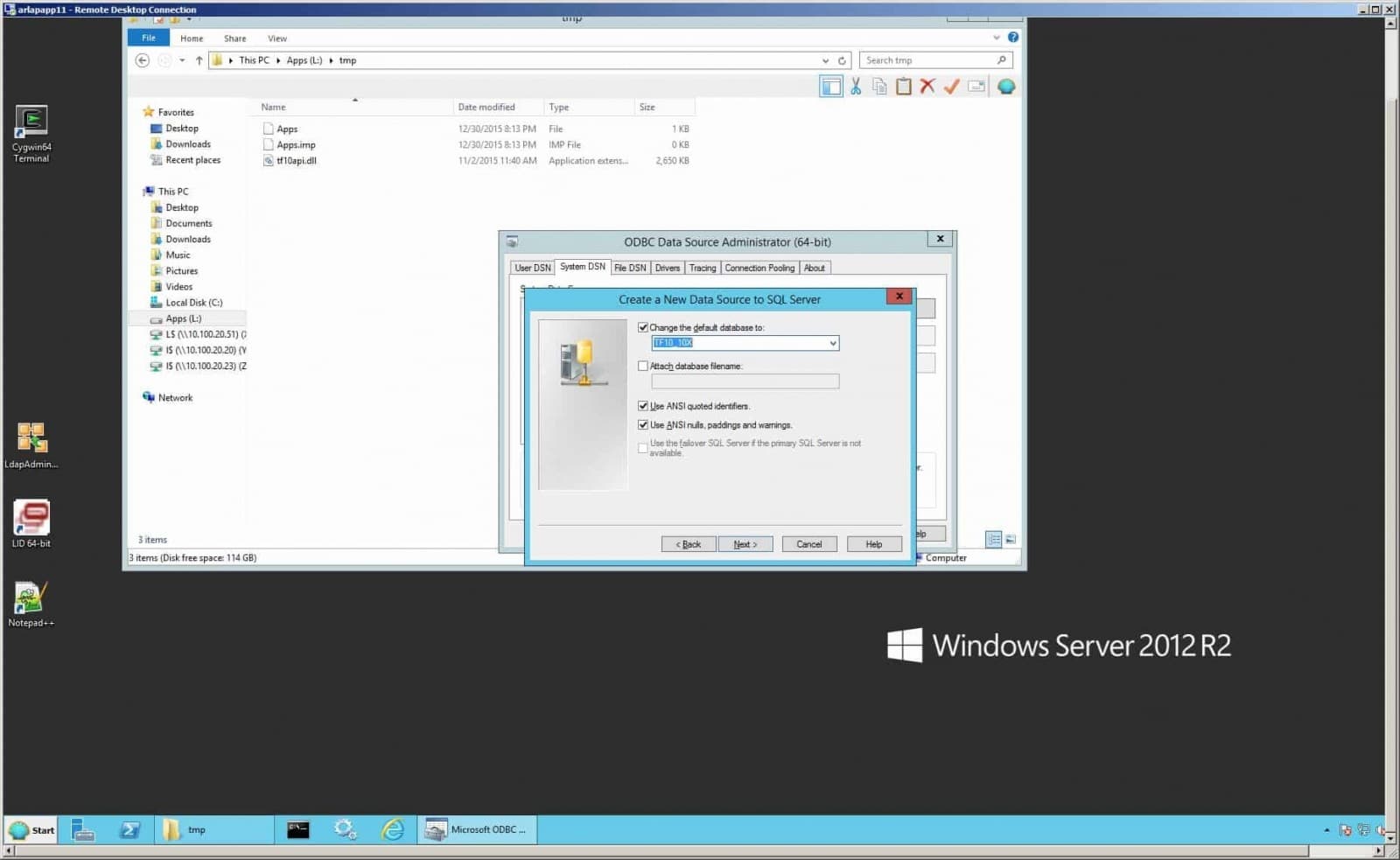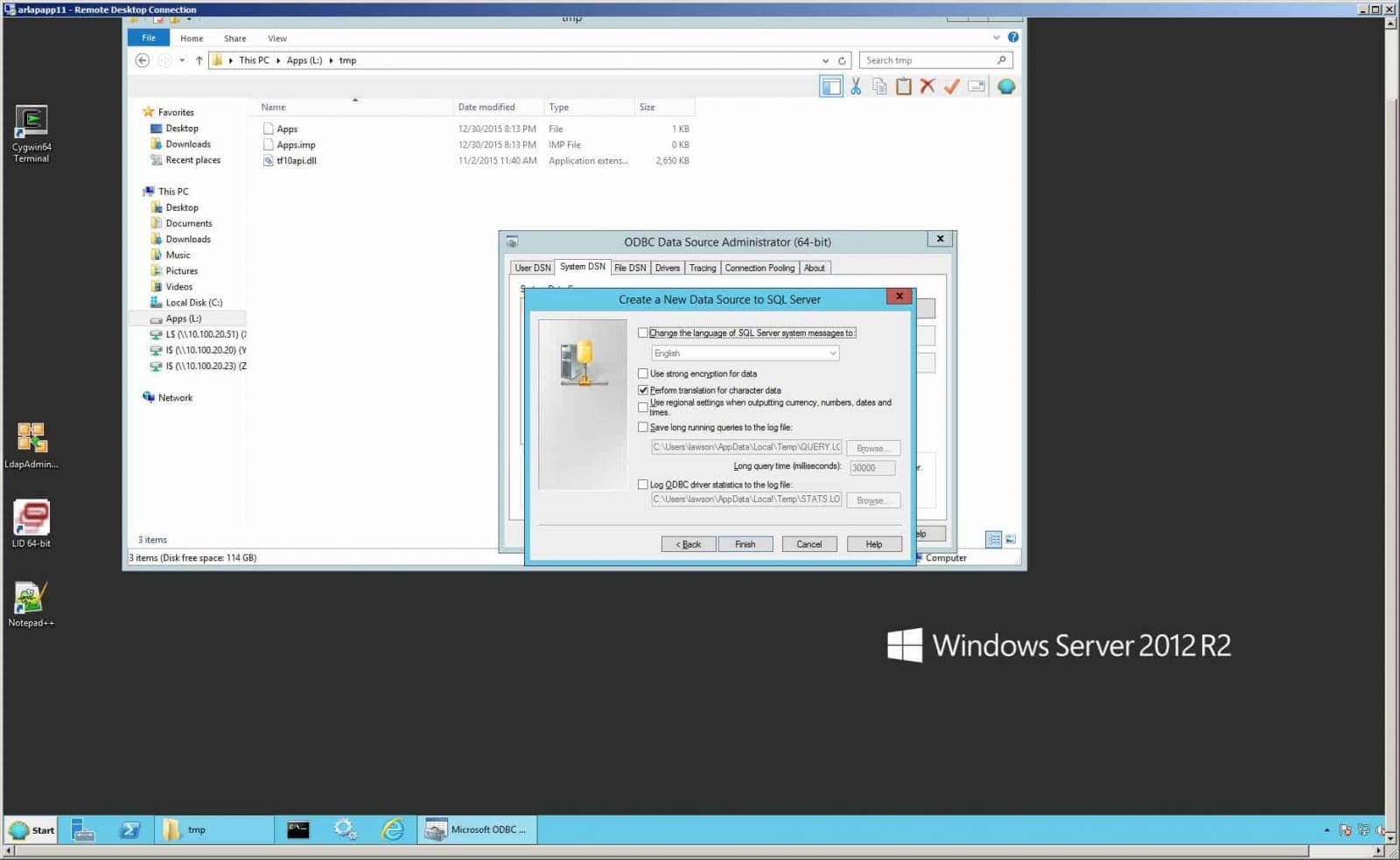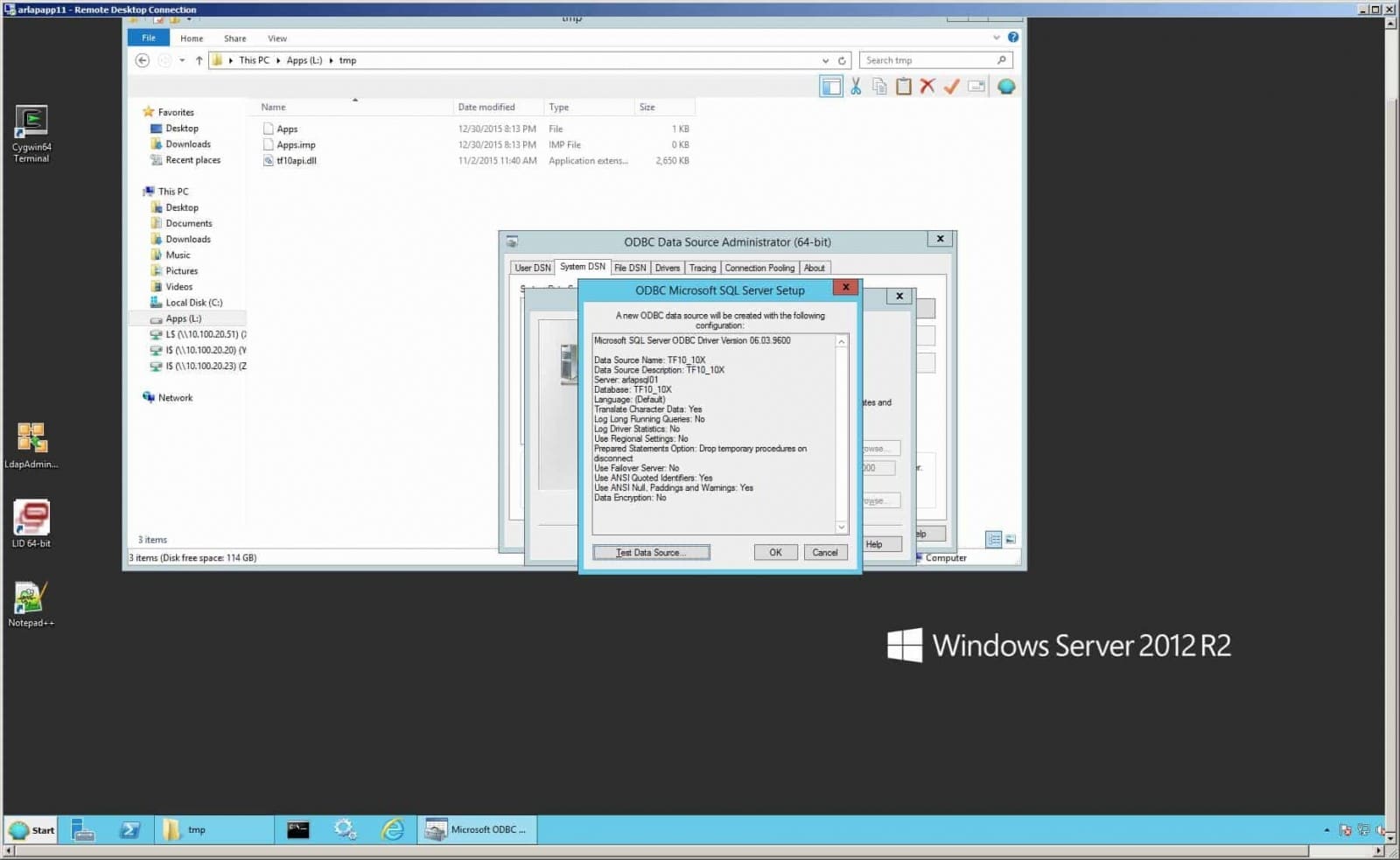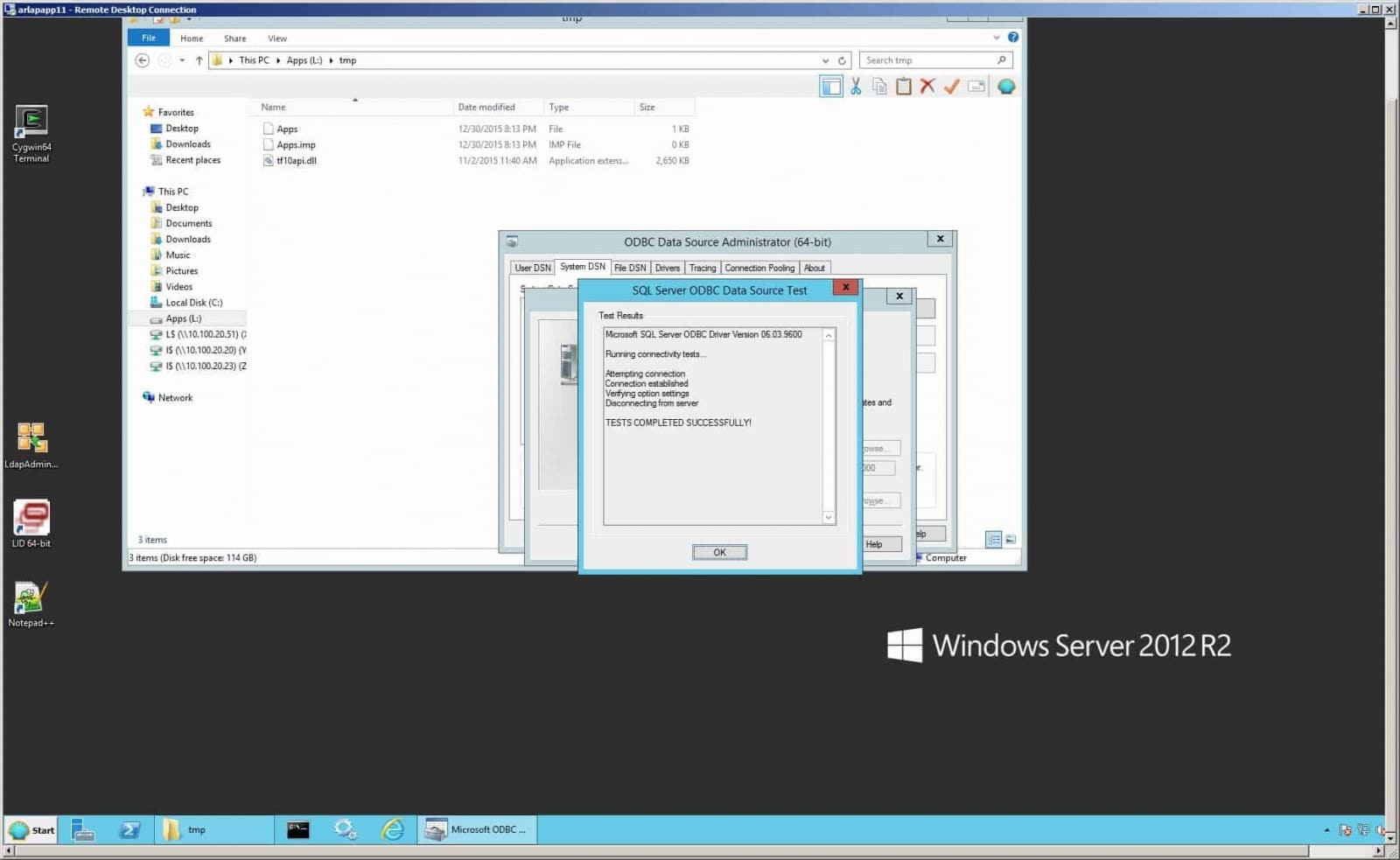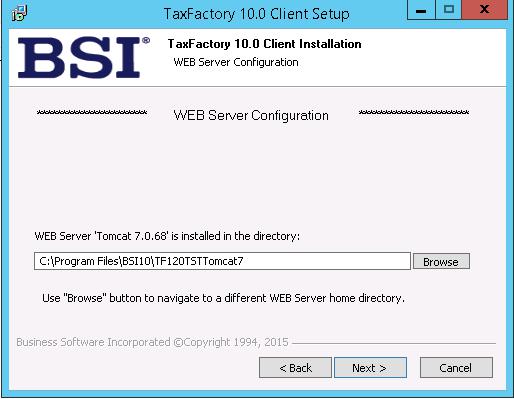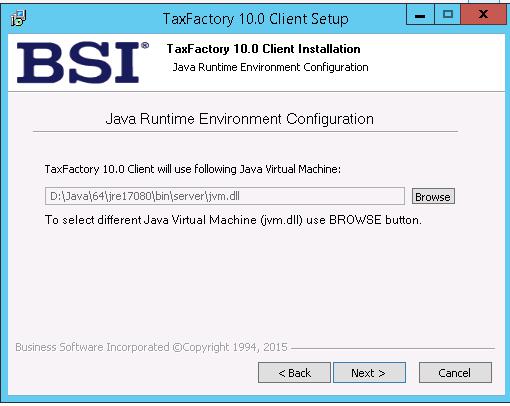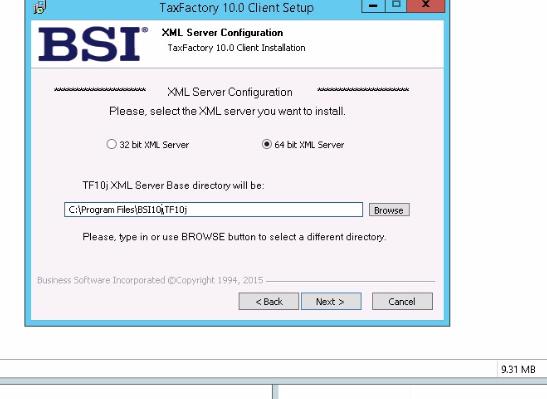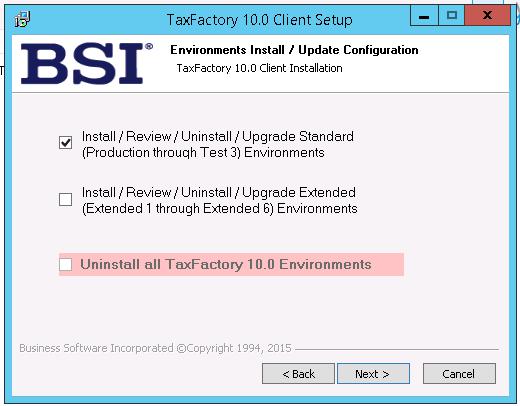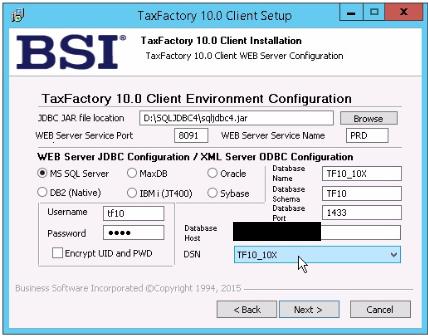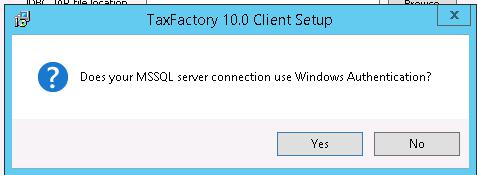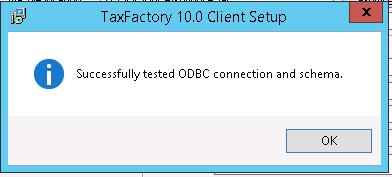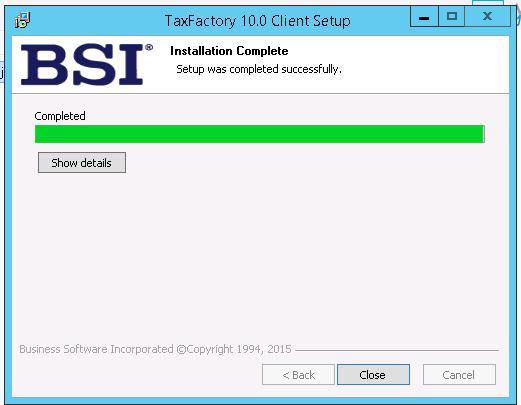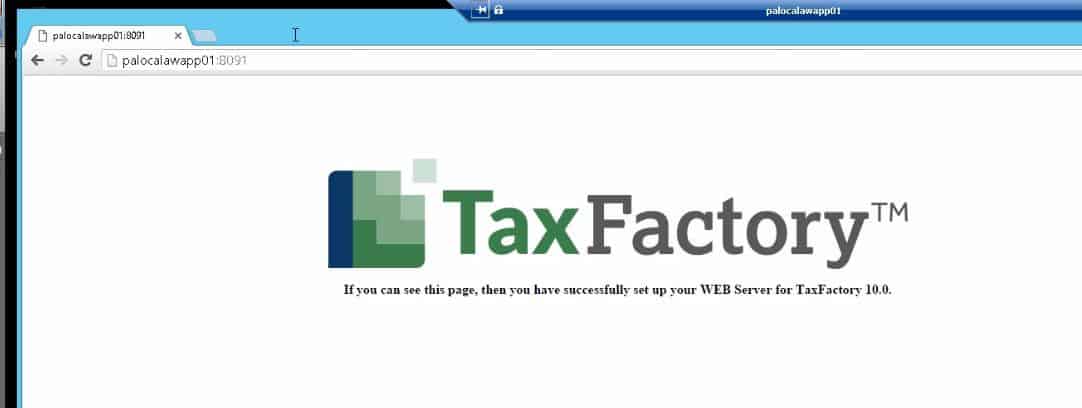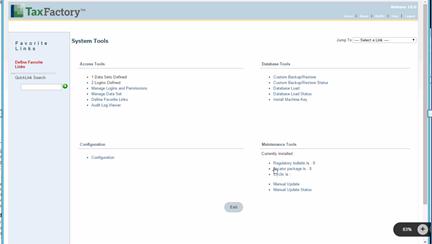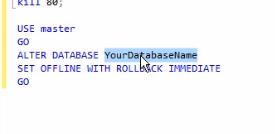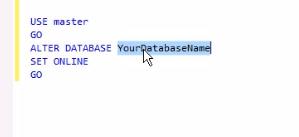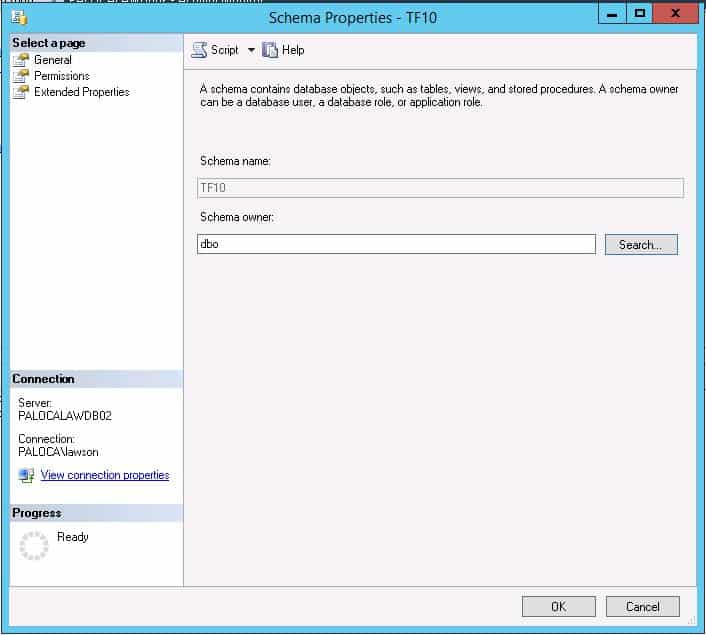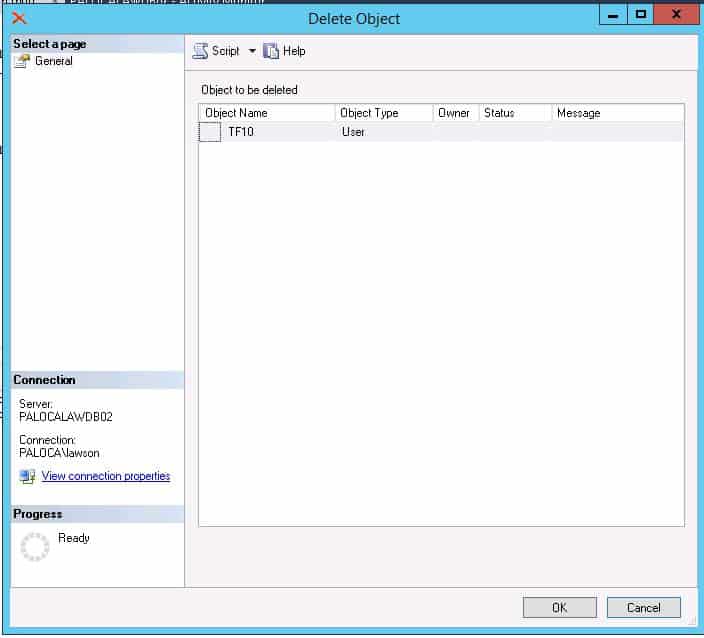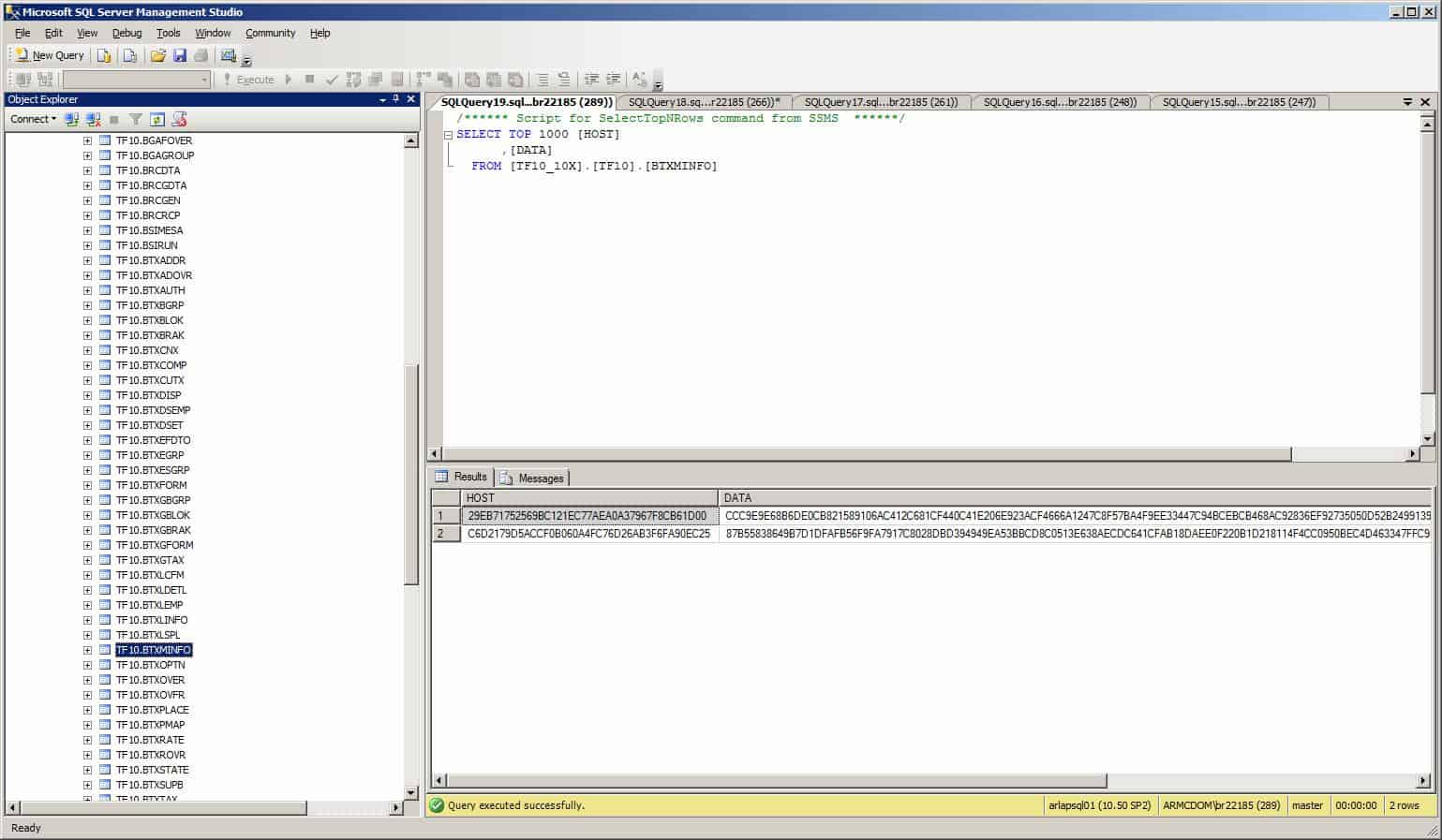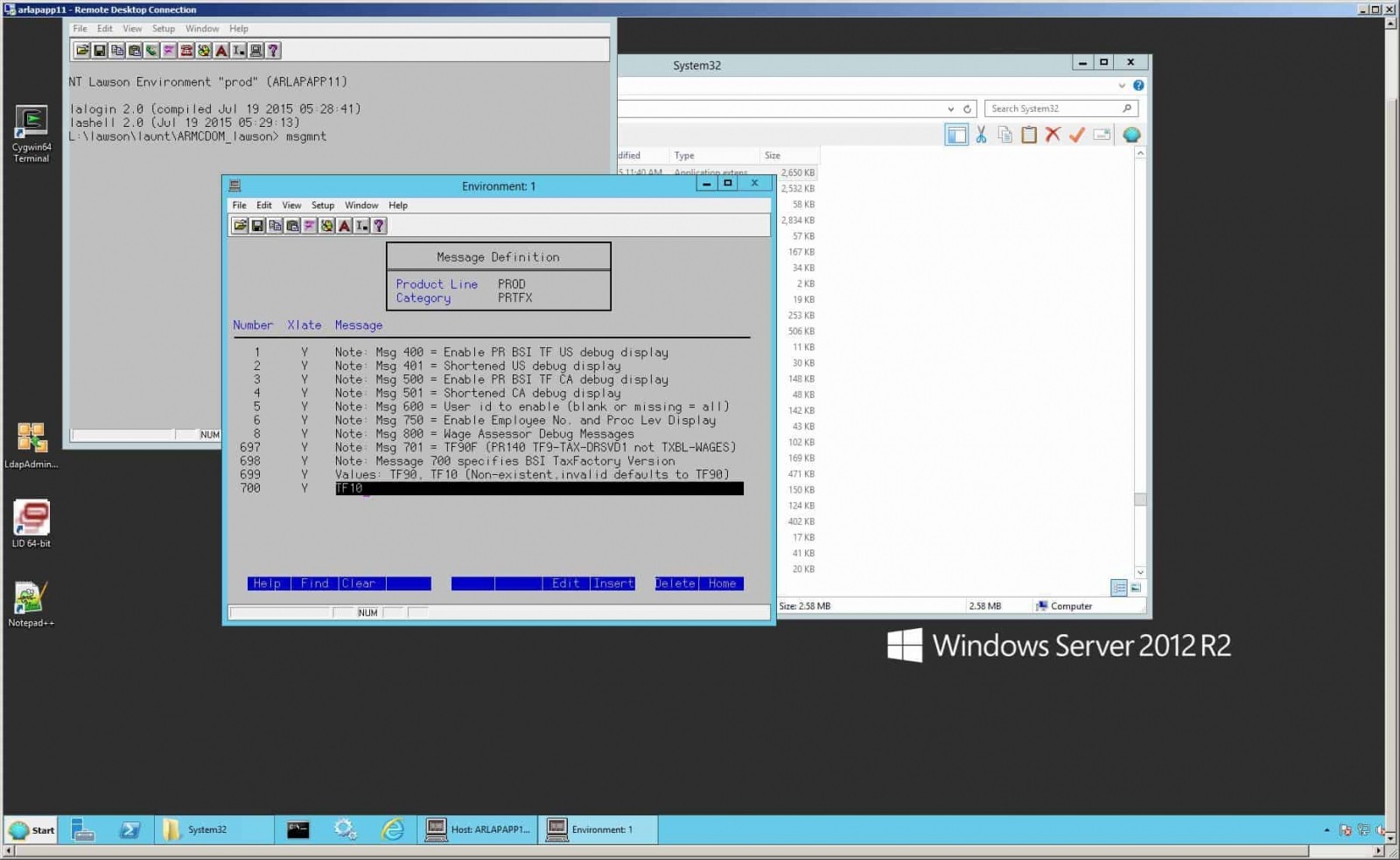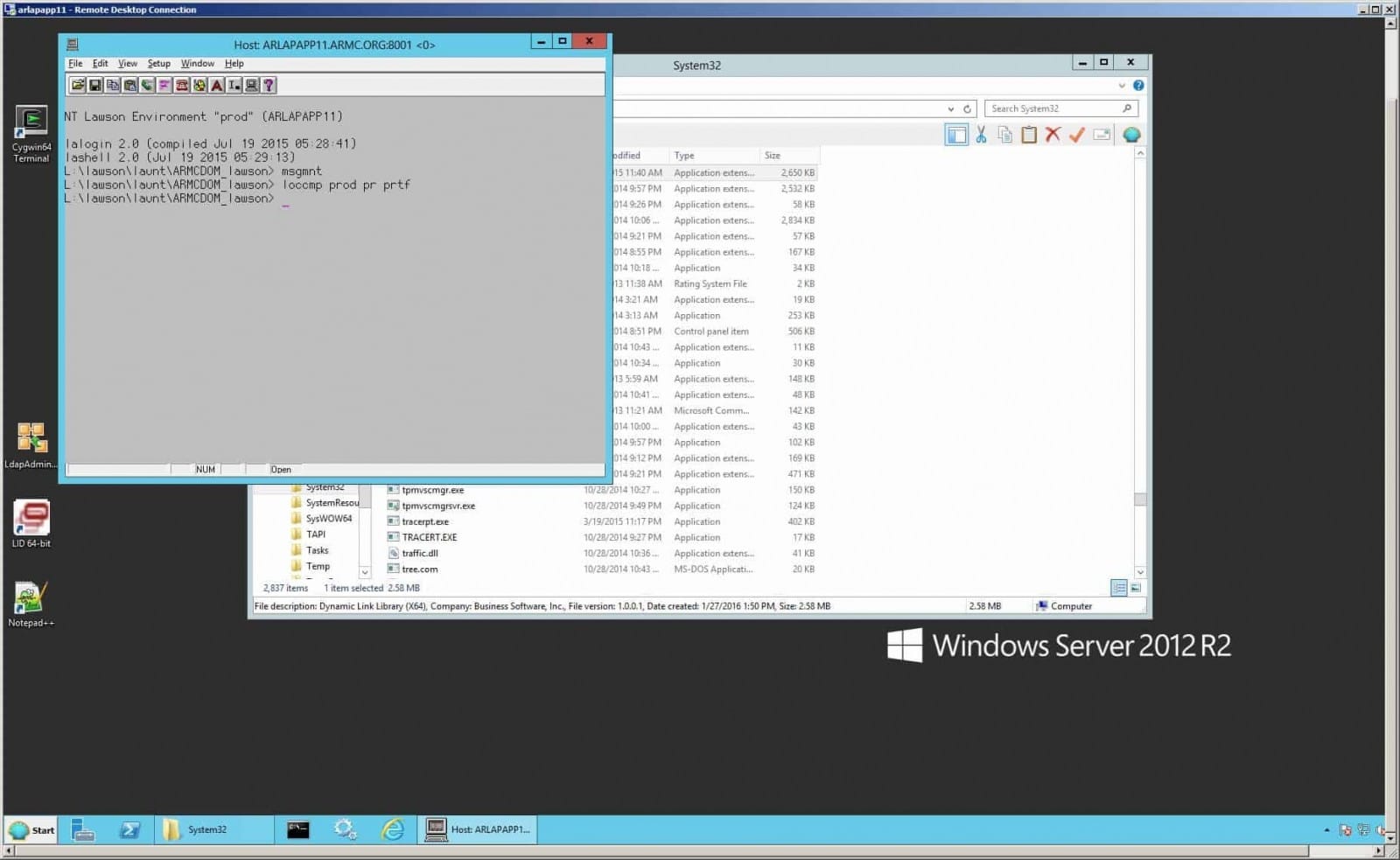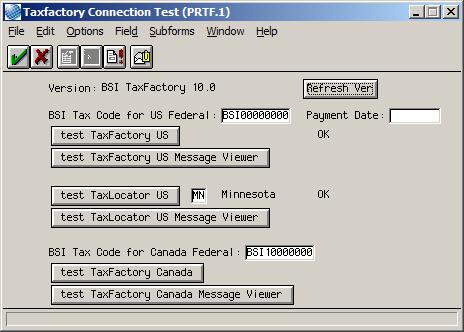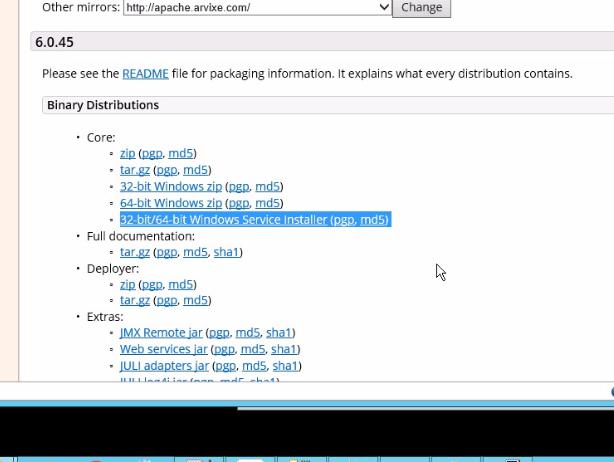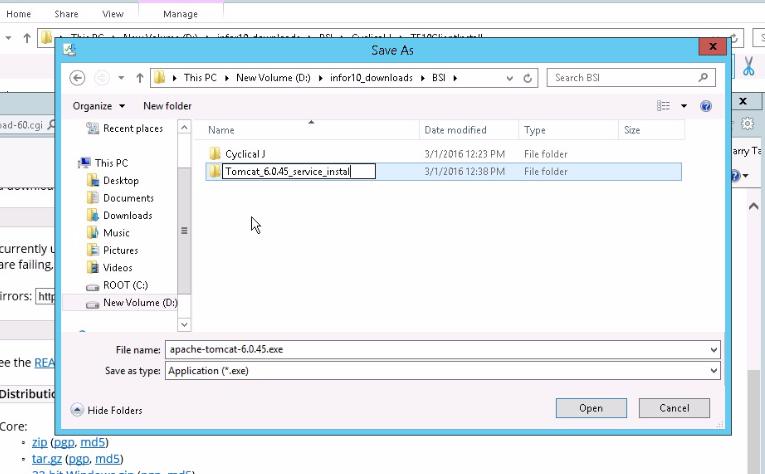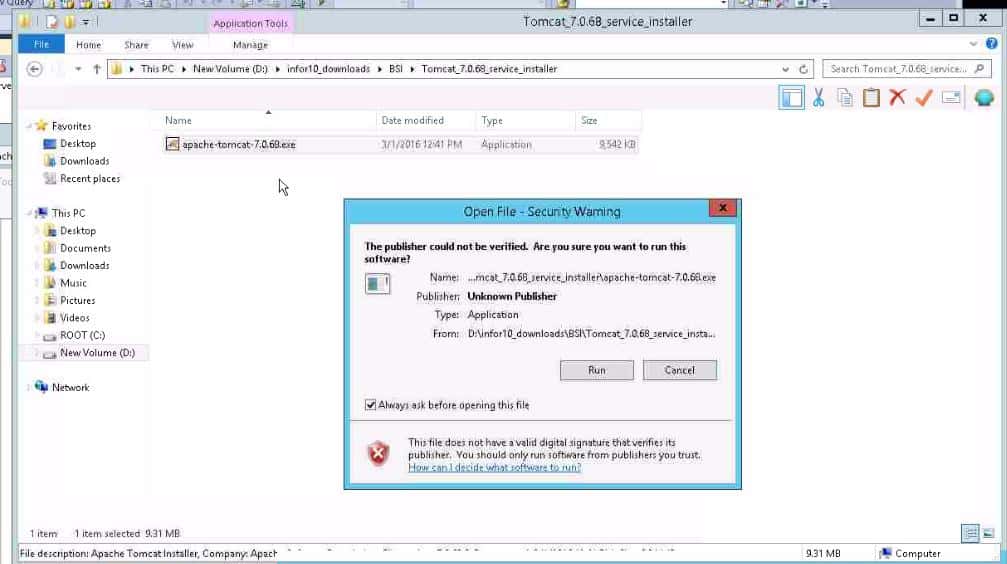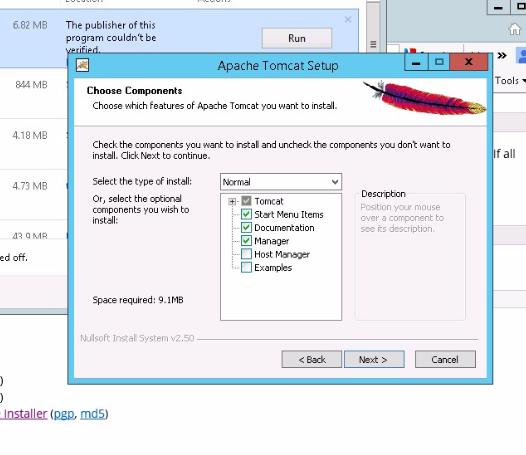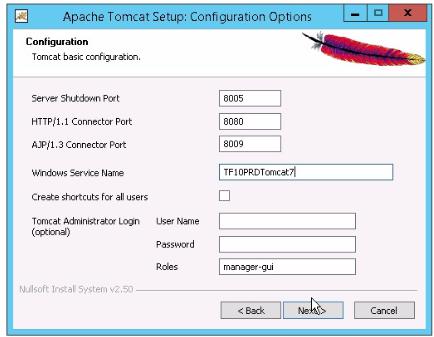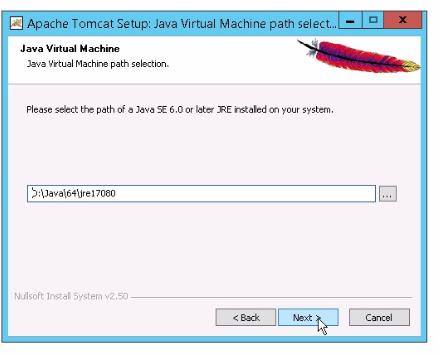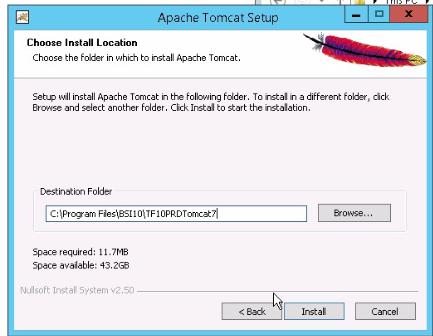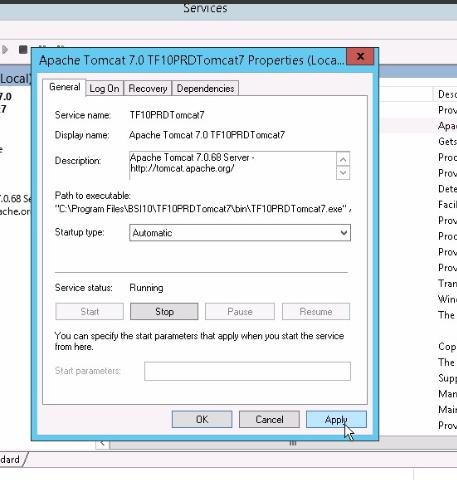Installing BSI TaxFactory 10 for Your New Lawson 10 Environment
System Preparation
- Get the latest BSI installation file and save to the Infor downloads folder on the server
- Run the executable to unpackage the installation files
Create the TF10 database
- Open SQL Server Management Studio
- Create TF10_10X database
- Options Menu
- Set collation to Latin1_General_Bin
- Recovery model = Full
- Compatibility Level = SQL Server 2008
- Keep the other defaults
- In SSMS, right click on the main Security server and select “new Login”
- Login name = tf10
- Use SQL Server authentication
- Password is usually tf10 unless the client request a different password
- Default Database = (your desired database name)
- Click OK
- Add the user to your database
- Expand the database in SSMS
- Expand the security folder
- Right click on Users > New
- User name = (tax factory user)
- Login name = (tax factory user)
- Default schema = leave blank for now
- Click Ok
- Locate the SQL scripts within the BSI installation files (ServerInstall/SQL)
- crtschma.sql
- Creates the tax factory schema
- tf10sqv.sql
- Creates the table structure for tax factory
- noessqv.sql
- Resets BSI TaxFactory extended security to off
Adjust Database Permissions
Adjust db permissions now that schema has been created:
- Click OK
System Configuration
Set up ODBC
- Data source name = (meaningful name)
- Description = (meaningful description)
- Server = client’s database server name (SQL Server where you installed the database)
- Create dataset environment variable
- Create the TF10_CONNECT_STRING environment variable using the login credentials for the ODBC data source you just created
- Reboot for env variables to take effect
Copy application files
- Copy new tf10api.dll from the installation files (ServerInstall\server) to Lawson application server (C:\Windows\System32 & C:\Windows\System)
Installation
Install Client Application
- Obtain BSI password needed for TF10 install from BSI Customer Services
- Install TF10 – TF10ClientInstall.exe on the BSI application server (adding a new BSI instance such as test, qa, test, etc)
(password obtained from BSI customer services)
- Choose the XML server corresponding to the system configuration
- Select a directory for the server base
- Enter the corresponding system information and click Next
- Can install up to 3 test instances on same server, but each one would have different WEB Server Service Port
- Repeat this section for the remaining test instances
- When you are finished with all instances, select the environments to be installed and click “FINISH”
Test the install
- Open the custom site that you installed and log in
- Check the System tools
- Regulatory bulletins should be 0
- Cyclic should be blank
- Log into server:port/ef10x/PRD
Cyclical Data Refresh
- Back up new 10x database
- Back up the current 901 BSI database
- Restore the 901 data to the 10x database to preserve all the tax updates.
- Log into the BSI site and verify that the Cyclical update inofrmation is now populated
Install Machine Key
As INFO: table containing the BSI machine key:
- Install Machine Key – if/when we have it
- Generate from BSI site, Maintenance, Maintain Machine Key
- Bring up web client, System Tools, Database Tools, Install Machine Key
- Can skip the load regulatory bulletins, cyclic files, etc, since DB restore was performed
PRTFX
- Test with LID
- New jobs should start reflecting in BSI TaxFactory Product in Message Viewer
Apache Tomcat Installation
